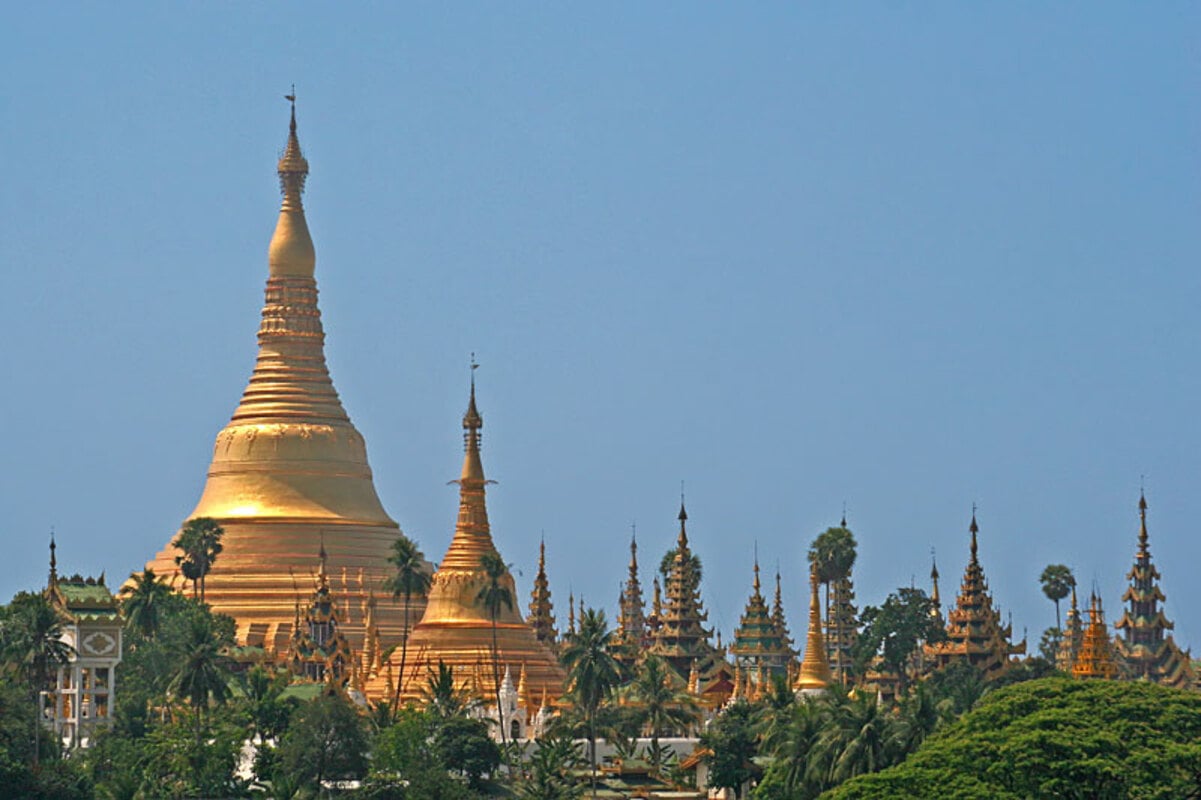Yangon, formerly known as Rangoon, has for centuries been the heart of Myanmar, preserving a unique blend of culture, history, and architecture. The city astonishes with its contrasts between ancient pagodas, colonial-era buildings, and rapidly developing modern districts. Although it is no longer the capital, it remains the country’s largest metropolis and its political, economic, and spiritual hub. Here, traditional beliefs, colonial heritage, and the rhythms of a modern city intertwine. We present fascinating facts about Yangon that you might not know.
- Until 1989 the city was known as Rangoon. The new name Yangon better reflects Burmese pronunciation, though the old name is still widely used in English-speaking countries. The renaming was part of a broader effort to restore national identity.
- Yangon was the capital of Myanmar until 2006. That year, the government moved the administrative center to the newly built city of Naypyidaw. Despite this change, Yangon remains the country’s main economic and cultural hub.
- The most famous landmark of Yangon is the Shwedagon Pagoda. Rising about 100 meters high and covered with tons of real gold, it is considered the most sacred Buddhist site in Myanmar. According to legend, it holds relics of four Buddhas.
- At night the Shwedagon Pagoda glows with golden reflections illuminated by countless lamps. It attracts not only tourists but also thousands of pilgrims every day. The atmosphere there is filled with spirituality and peace.
- Yangon’s architectural landscape was heavily shaped by the British colonial era. The city center still features Victorian and neoclassical buildings. It is regarded as one of the largest collections of colonial architecture in Southeast Asia.
- More than 7 million people live in Yangon. This makes it the most populous city in Myanmar. The population is ethnically and culturally diverse.
- The city is home to the largest market in the country – formerly Scott Market, today known as Bogyoke Aung San Market. Here you can find jewelry, Burmese textiles, antiques, and countless souvenirs. It is a favorite place for both locals and visitors.
- One of Yangon’s unique features is the circular railway. The train makes a full loop around the city and its suburbs in three hours, offering a glimpse into the daily lives of residents. It is often described as a journey back in time.
- Yangon is rich in parks and green areas. The best known is Kandawgyi Lake, beside which stands the giant golden Karaweik barge, a symbol of the city. It is a popular place for relaxation and romantic walks.
- The city is famous for its chaotic traffic. Until 2011 motorcycles were banned, so the streets are dominated by cars and buses. This situation results in constant traffic jams.
- Despite its size, Yangon has relatively few skyscrapers. For many years building height was restricted to ensure no structure was taller than the Shwedagon Pagoda. Only in recent years have these rules been reconsidered.
- Among Yangon’s religious sites one can find not only Buddhist pagodas but also Hindu temples, mosques, Christian churches, and even a synagogue. This diversity demonstrates the city’s multicultural and tolerant character.
- Chinese and Indian communities have a strong influence on Yangon. Their presence is evident in the cuisine, architecture, and traditions. This has given the city a richly diverse cultural atmosphere.
- Yangon’s economy is based on trade, industry, and services. It hosts Myanmar’s largest banks, business centers, and companies. The city also serves as the main gateway for international investments.
- Yangon is a center of traditional Burmese cuisine. One of the most famous dishes is mohinga, a fish and noodle soup regarded as a national symbol. Street food is an essential part of everyday life.
- The city’s climate is tropical with a pronounced monsoon season. Humid weather favors lush vegetation. At the same time, heavy rains often paralyze urban traffic.
- Yangon is home to one of the world’s largest Buddhist universities. Monks from various countries study Pali texts and Buddhist philosophy here. This emphasizes the city’s role as a spiritual center.
- A distinctive tradition in Yangon is the use of thanaka. This yellowish paste made from tree bark is applied to the face by women and children. It serves both as a cosmetic and a natural sunblock.
- Teahouses are a defining feature of Yangon. They are favorite gathering places where people discuss politics, sports, and everyday affairs. Tea culture here blends influences from India, China, and local traditions.
- Yangon’s cultural life includes festivals, theater performances, and cinema. Buddhist celebrations are especially popular, filling the streets with colorful processions. Such events are an important part of the city’s identity.
- The city is regarded as the main gateway to Myanmar for international visitors. Most journeys through the country begin here. Yangon International Airport is the largest in Myanmar.
- Several museums are located in the city, including the National Museum of Myanmar. Its exhibits include King Thibaw’s throne and many other treasures that showcase the nation’s history.
- Night markets are a distinctive feature of Yangon. They offer food, clothing, jewelry, and a variety of goods for locals and tourists alike. Their lively atmosphere reflects the vibrant spirit of the city.
- Yangon is a city of contrasts where modern technologies coexist with centuries-old traditions. Luxury hotels stand side by side with simple wooden houses. This makes the metropolis dynamic and multifaceted.
Yangon is not only a former capital but also the cultural heart of Myanmar, continuing to impress with its many dimensions. Interesting facts highlight the city’s unique combination of spirituality, history, and modernity. Fascinating facts prove that Yangon deserves the special attention of travelers. You might not have known many of these details, but now the city reveals itself in a new and remarkable light.





